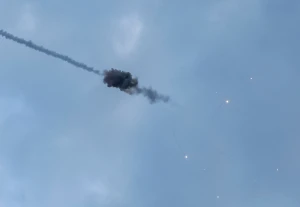
Russian threat to mine Ukrainian grain corridor: how to respond
British intelligence has issued a warning about Russia's plan to disrupt grain shipments from Ukraine in the Black Sea using sea mines. Counteracting this threat is a challenging task, but there is one potential solution
Defense Express writes about it.
The Russian Federation's withdrawal from the grain agreement earlier this year and its declaration of unlimited naval warfare in July raised concerns about the safety of the grain corridor. While these actions have already disrupted shipping, further attacks on port infrastructure have not ceased.
Now, the UK Ministry of Defense reports that Russia intends to target civilian vessels navigating the Ukrainian "humanitarian corridor" to hinder the export of Ukrainian grain. They may deploy sea mines along the route and near Ukrainian ports, opting for mines to avoid direct blame for ship sinkings.
Russia may use submarines for mining
This scenario aligns with an earlier prediction by expert Petro Chernyk in August, suggesting the involvement of submarines in mining operations for covert execution. Submarines offer stealth compared to surface ships, which could be destroyed by Ukrainian anti-ship missiles, or aircraft vulnerable to air defenses.
Russian submarines, particularly the Project 636 “Varshavyanka” submarines, use advanced mines equipped with three-channel sensors (acoustic, electromagnetic, and hydrodynamic). The MDM (UDM) mine, for instance, has a 645-800 kg warhead, and the MShM mine can attack ships from considerable depths.
Storm Shadow can be a solution
Ukraine currently lacks conventional means to combat submarines effectively, requiring anti-submarine ships, aircraft, helicopters, and ideally, submarines. Attacking submarines in Novorossiysk, where the Russian Black Sea Fleet relocated, poses significant challenges.
One alternative is to seek permission from Western partners to use Storm Shadow/SCALP missiles against Russian military facilities. However, this option faces logistical hurdles due to the distance and airspace considerations.
Countering the Russian threat to mine the Black Sea presents a complex challenge. Nonetheless, it becomes feasible if partners permit the use of cruise missiles against Russian military targets and support a coordinated air operation.
More about the humanitarian corridor in the Black Sea
On 17 July, Russia announced the termination of the grain deal. In response, Volodymyr Zelenskyy said that it was necessary to continue using the grain corridor despite Russia's withdrawal from the agreement.
On August 10, the Ukrainian Navy announced a temporary humanitarian corridor for merchant ships sailing to and from Ukrainian ports.
On August 12, Ukraine opened the registration of merchant ships and their owners who are ready to use temporary routes to Ukrainian ports in the Black Sea.
On August 16, the first vessel left the port of Odesa after Russia announced that it would terminate the grain deal on July 16, 2023.
On August 26, the second vessel left the port of Odesa, and on September 1, two more vessels blocked due to the war left the port of Pivdennyi in the Odesa region.
On September 16, the blocked bulk carrier PUMA (Cayman Islands) left the Odesa seaport. The vessel was loaded with 16,000 tons of metal and 14,000 tons of rapeseed.
On the same day, Ukraine’s Infrastructure Minister Oleksandr Kubrakov said that the first civilian ships had confirmed their readiness to use the route to the Chornomorsk port to load almost 20,000 tons of wheat for Africa and Asia.
On September 16, Kubrakov said that after Russia withdrew from the grain deal, the occupiers struck Ukraine's ports 118 times. About a third of the infrastructure was damaged or destroyed.
On September 19, the vessel RESILIENT AFRICA left Odesa's Chornomorsk port via a temporary corridor: it was loaded with 3,000 tons of wheat
- News













































